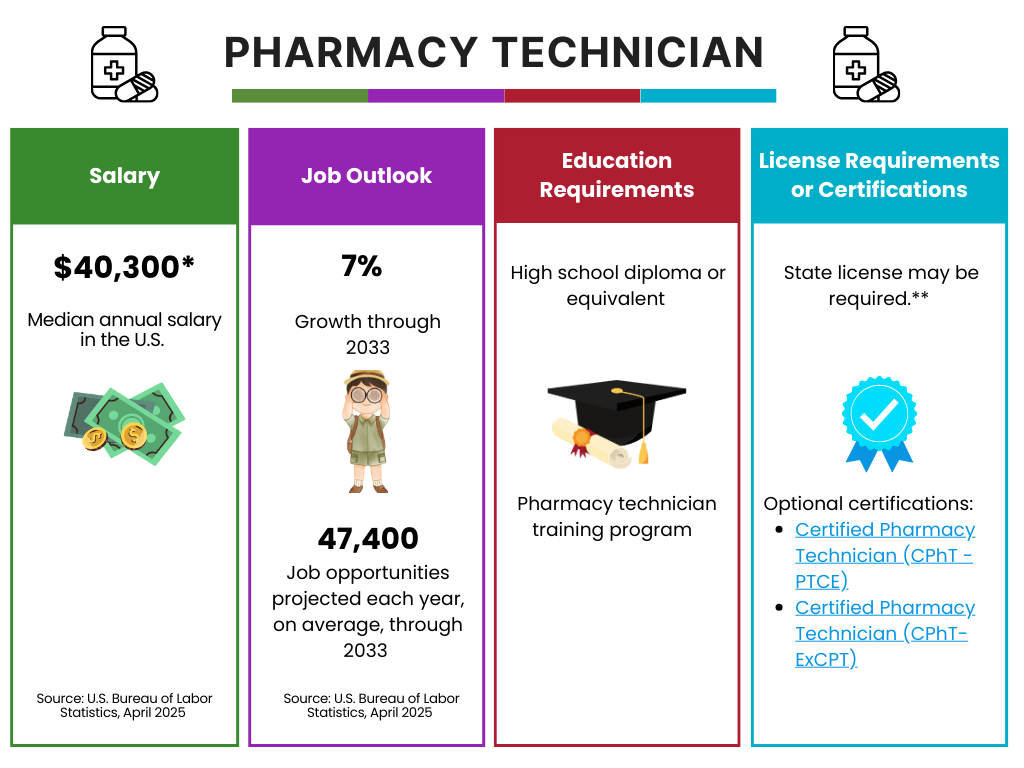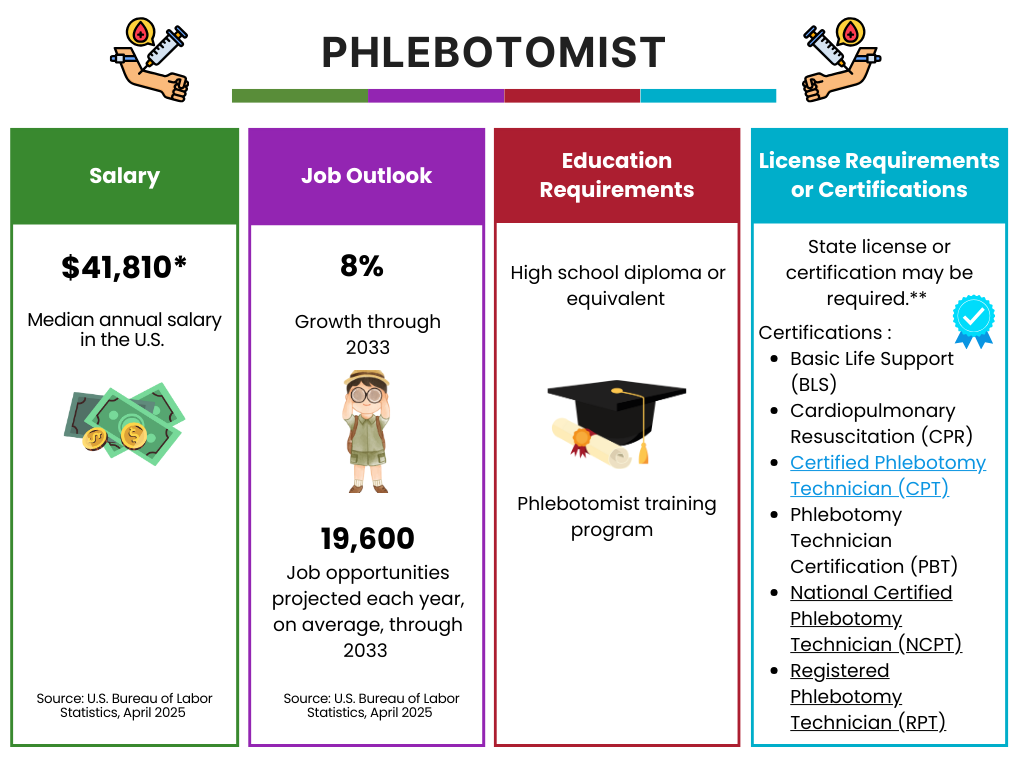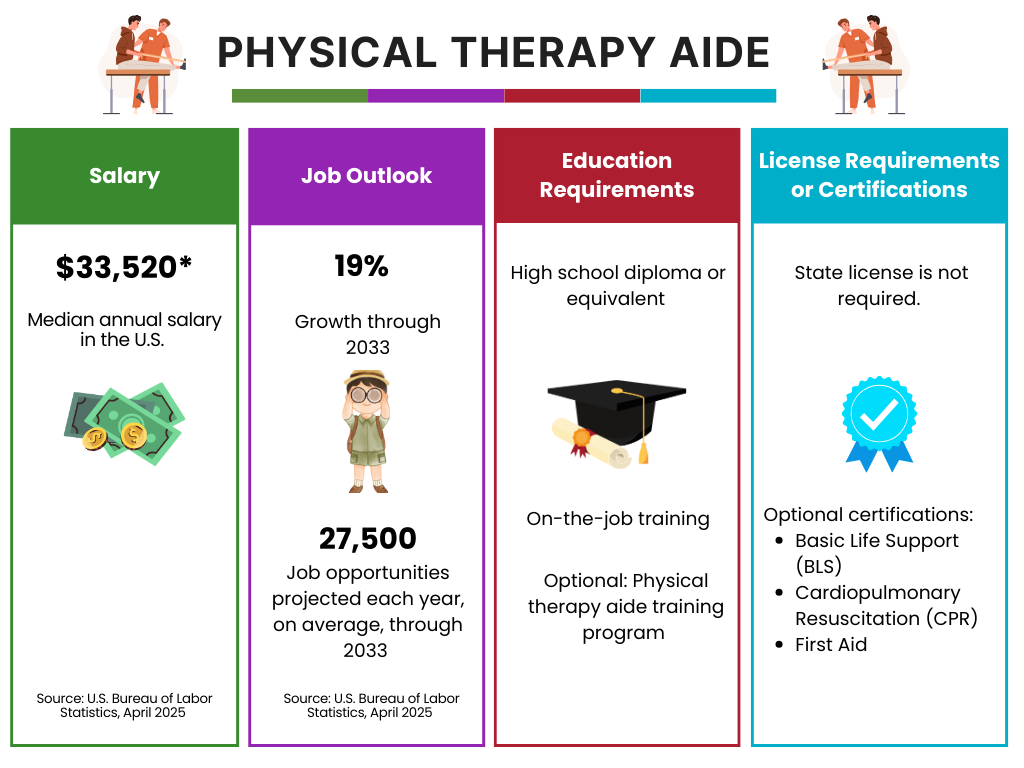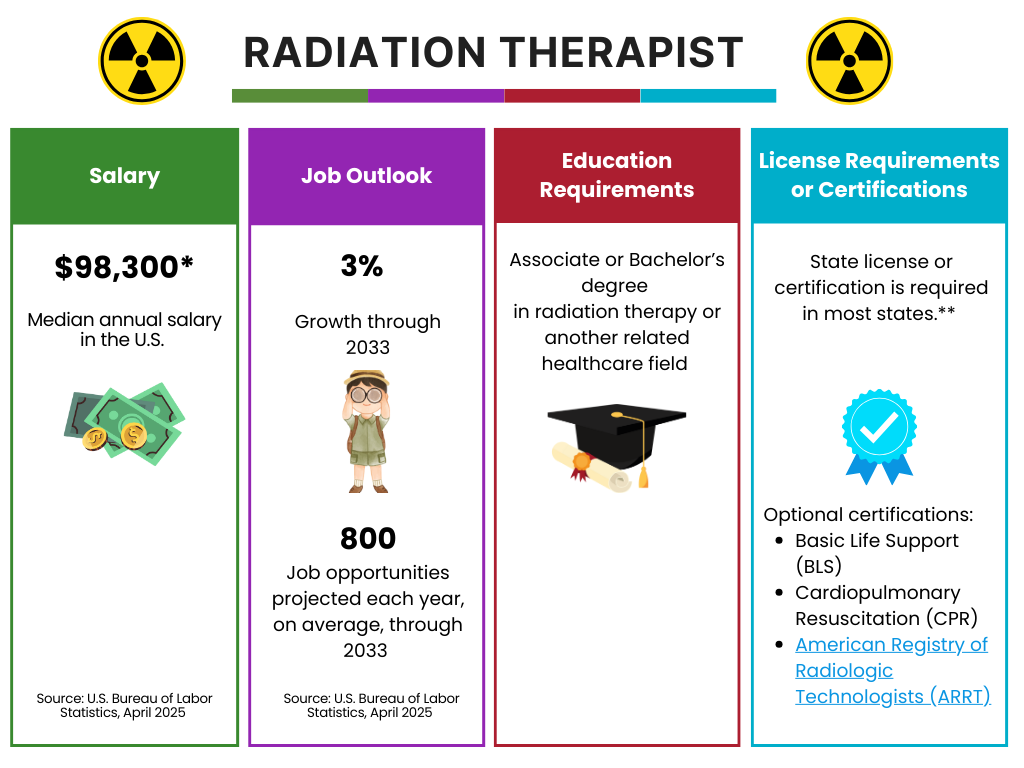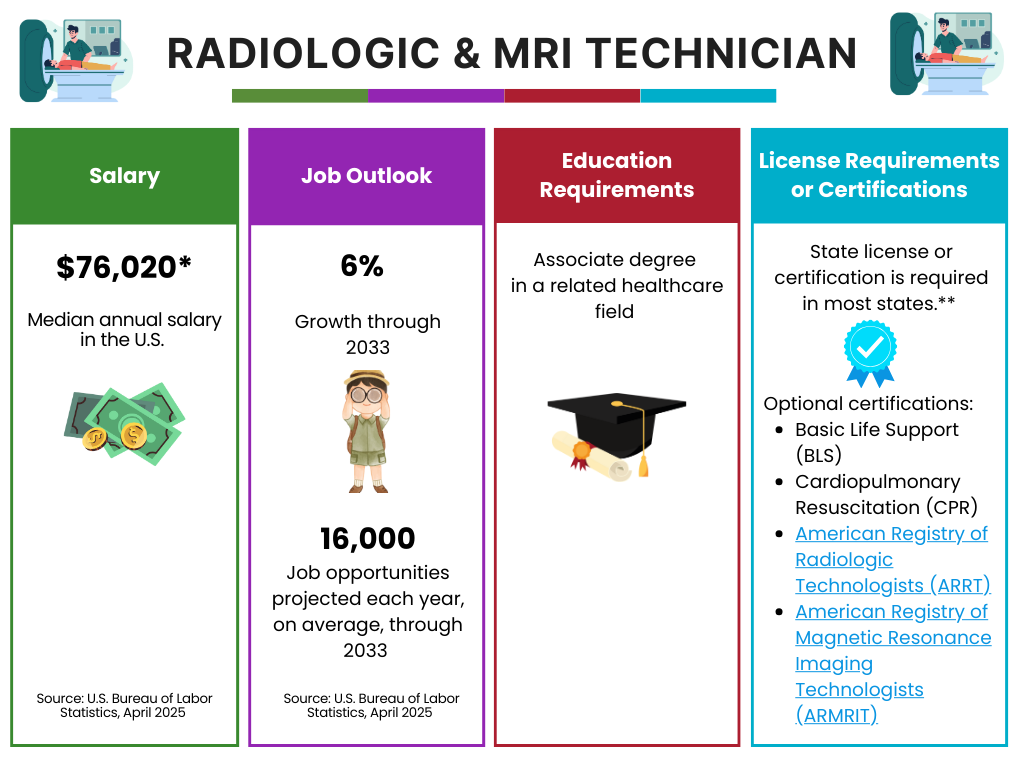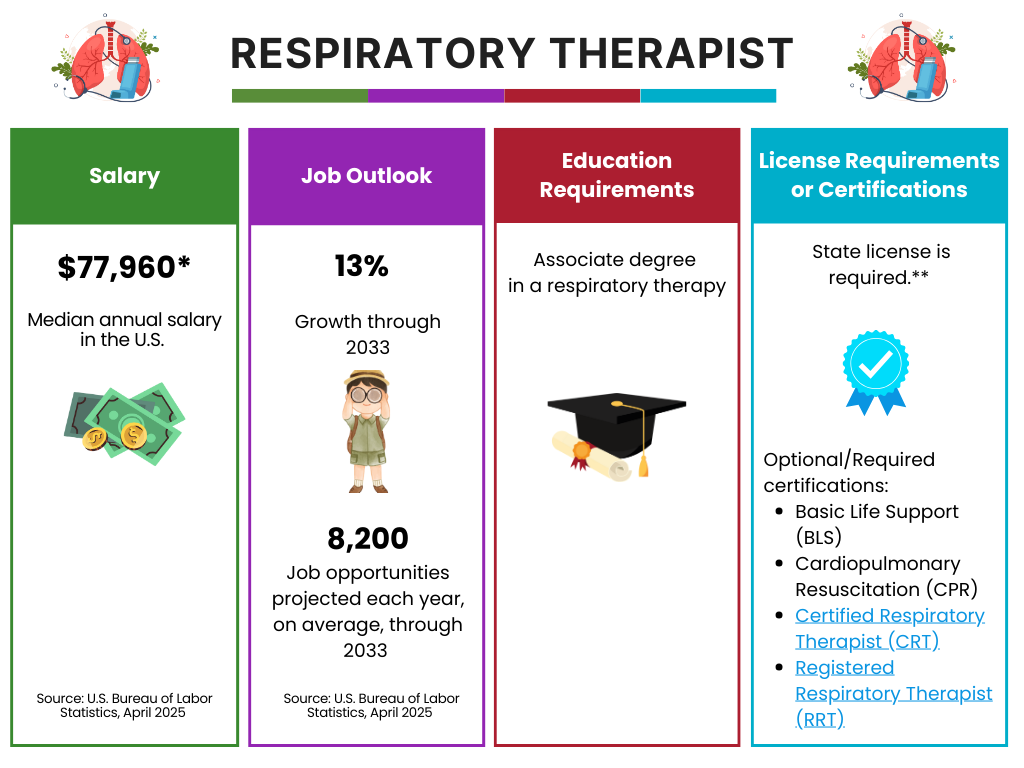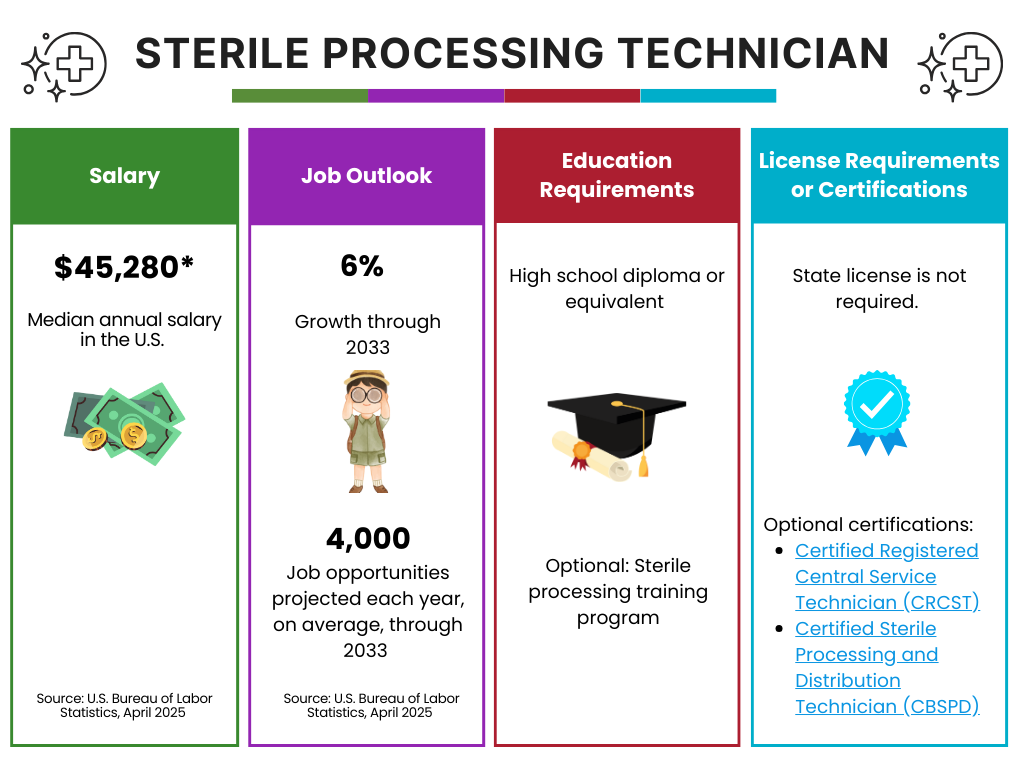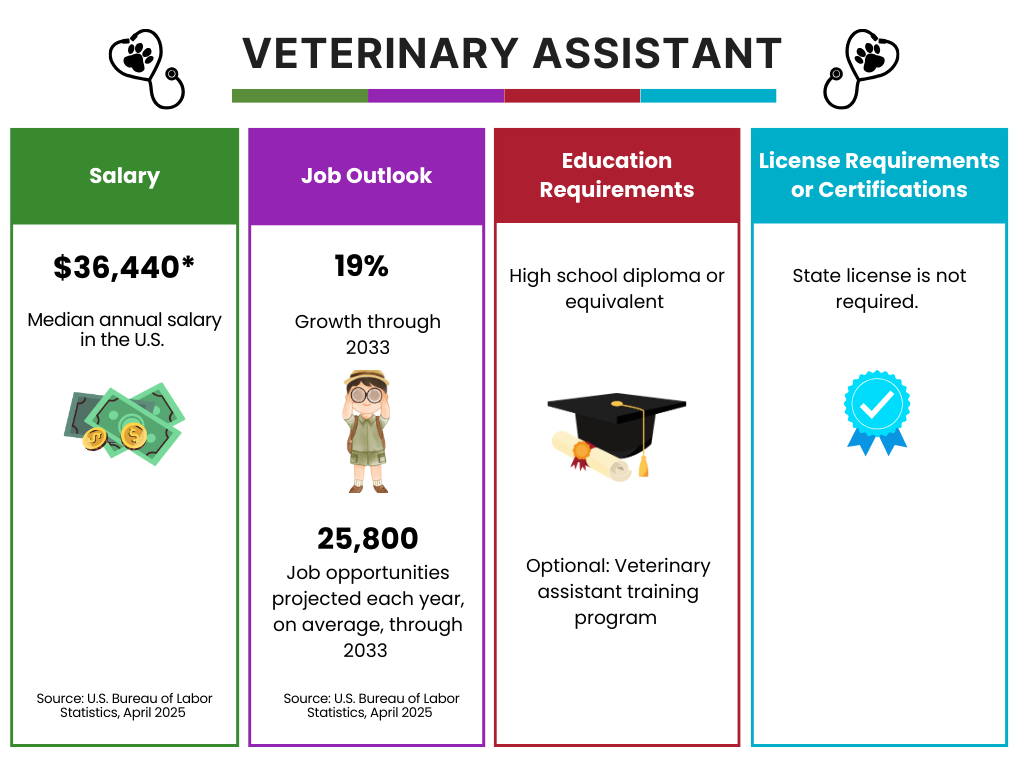22 Healthcare Careers Requiring an Associate Degree or Less
By: Jenn Hall | May 2025
Healthcare professionals rank just as high on the hero scale as firefighters, military personnel, and others. And the best part? You don’t have to be a world-renowned doctor or cure a terrible disease to be a part of this amazing group. With an associate degree, certificate, or even simply a high school diploma or equivalent, you can become a healthcare professional who provides much-needed care and support for healthcare teams and patients alike. The following 22 healthcare careers fit this mold, so let’s dig a little deeper into each one.
#1. Dental Assistant
Dental assistants have the unique opportunity to support both patients and the dental care team. Some of their primary responsibilities include sterilizing instruments, preparing the work area for dental appointments, supporting dentists during treatments or procedures, and recording dental treatments and procedures in a patient’s medical record.
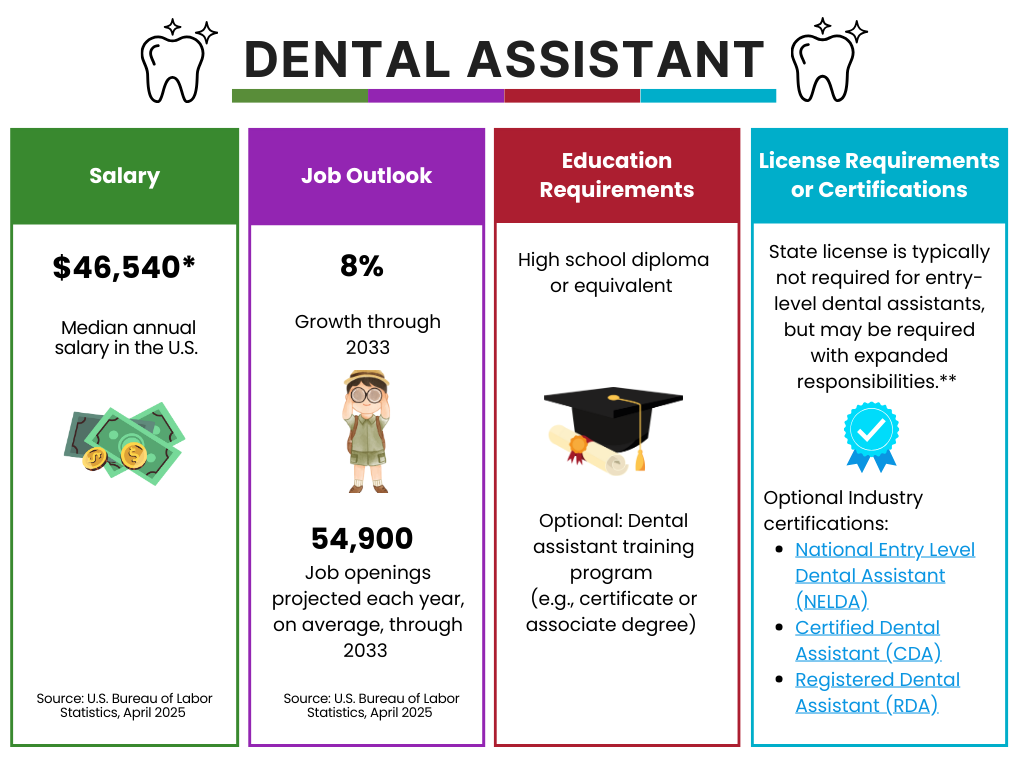
Additional resources:
#2. Dental Hygienist
If you’ve ever had your teeth cleaned at a dentist’s office, you’ve spent time under the care of a dental hygienist. These healthcare providers help keep your mouth healthy and your teeth white. Some of their primary responsibilities include performing routine dental cleanings, polishing teeth, applying fluoride treatments, taking dental x-rays, and instructing patients on proper oral hygiene.
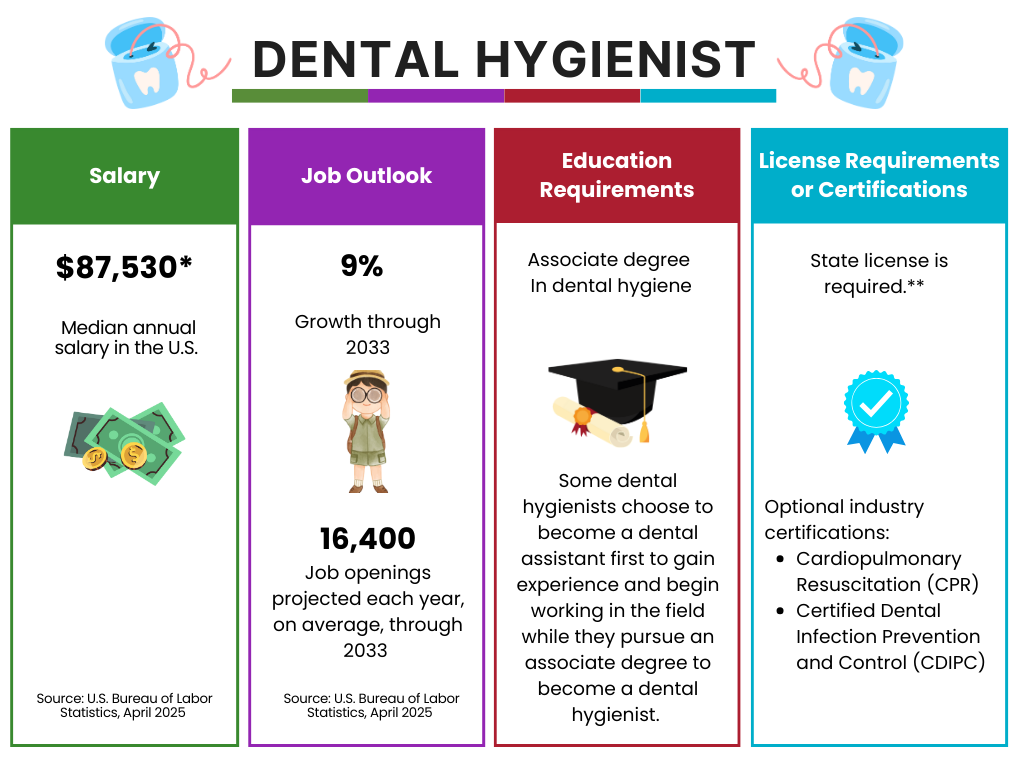
Additional resources
#3. EKG Technician
When it comes to matters of the heart, an EKG technician is a great resource to conduct relevant tests that aid in the identification of potential issues or ailments. To do this, EKG technicians use a specialized electrocardiogram (EKG) machine to monitor the patient’s heart performance by placing electrodes on their chest, arms, and legs.
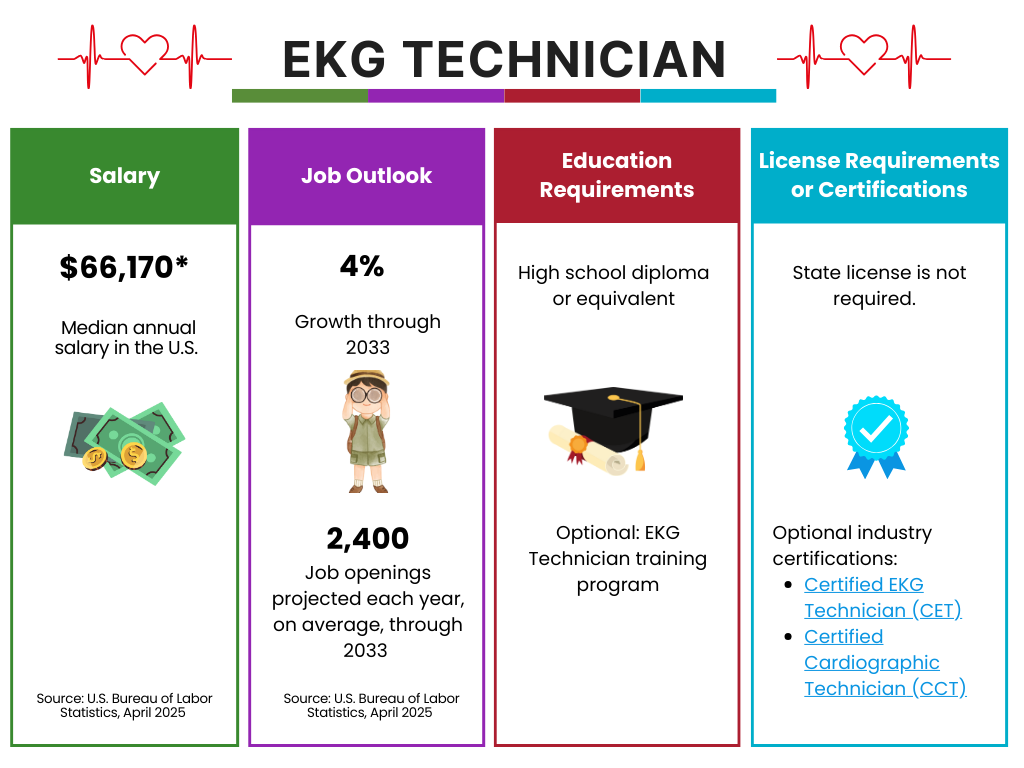
Additional resources
#4. EMT and Paramedic
When a medical emergency happens, often the first people to arrive on the scene are emergency medical technicians (EMTs) and paramedics. These medical professionals are trained to assess injuries or illnesses and provide appropriate care, including basic life support and first aid. EMTs and paramedics will transport patients to a hospital or other healthcare facility for further treatment and document and report on their interventions for the receiving healthcare team and the patient’s medical record.
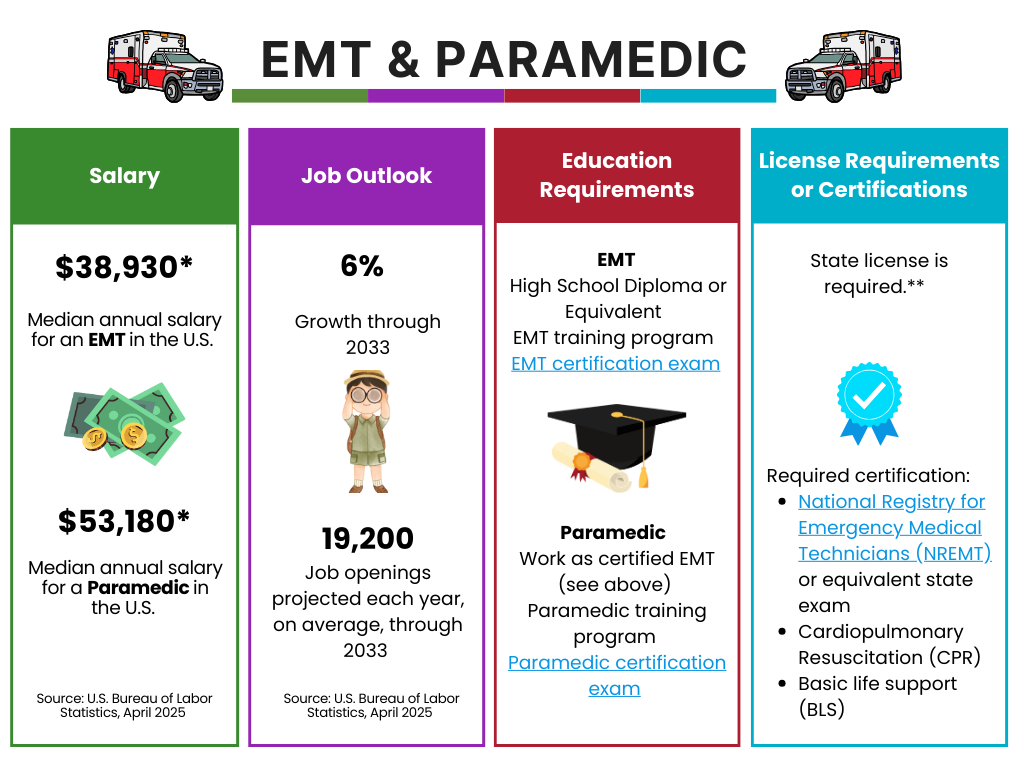
#5. Healthcare Office Manager
Healthcare office managers help keep a healthcare facility running smoothly. Some of their primary responsibilities include managing administrative tasks, supervising staff members, and helping to ensure compliance with relevant regulations.
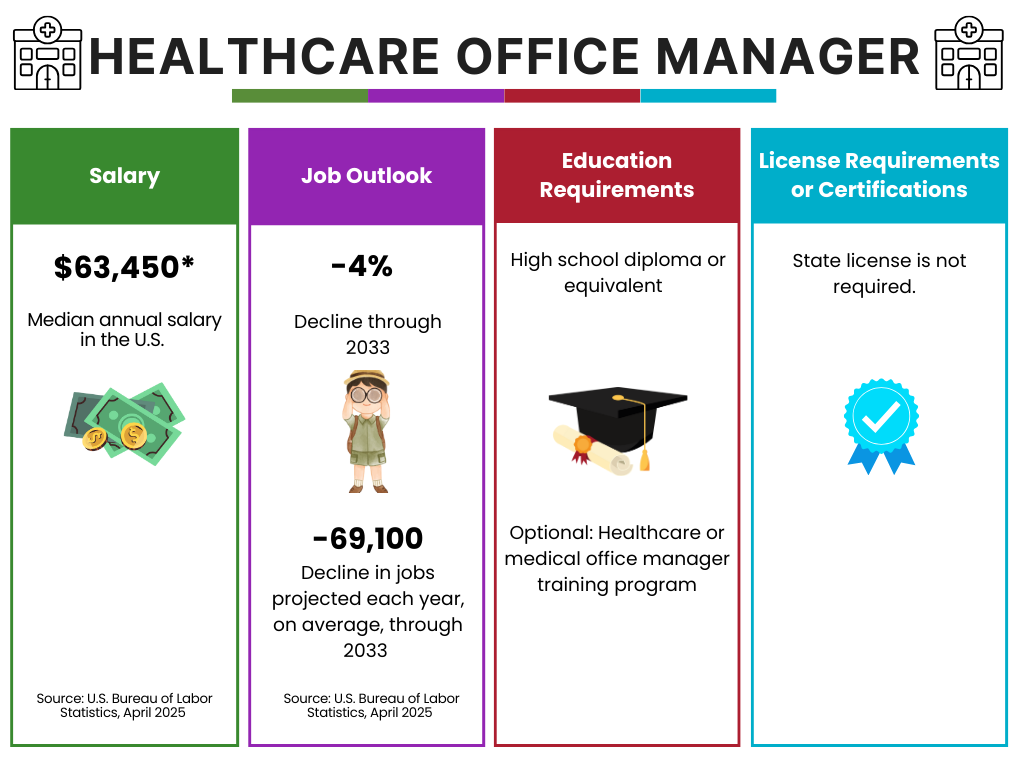
Additional resources
#6. HIT and Medical Registrar
As you may suspect, the healthcare industry runs on data and requires efficient systems to manage that data. Health information technicians (HIT) and medical registrars are champions of that data, advising organizations on digital healthcare information systems and supporting data analysis. Some of their primary responsibilities include determining system requirements, supporting implementation of health information systems, organizing and updating information in clinical databases, validating patient data integrity, and advocating for patient privacy and confidentiality.
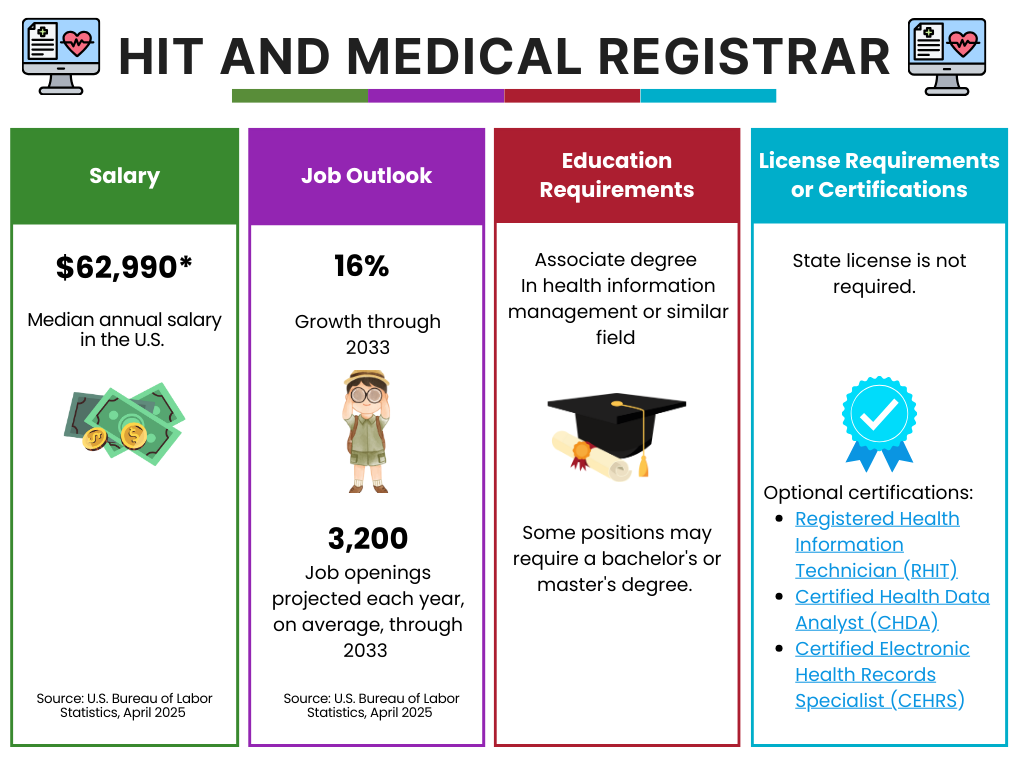
Additional resources
#7. Home Health and Personal Care Aide
Home health or personal care aides provide much-needed care and support for individuals with injuries, disabilities, or other impairments from the comfort of their own home. Some of their primary responsibilities include helping patients with daily personal tasks (e.g., dressing, bathing), helping with housekeeping tasks, scheduling and arranging transportation for appointments, and shopping for groceries.
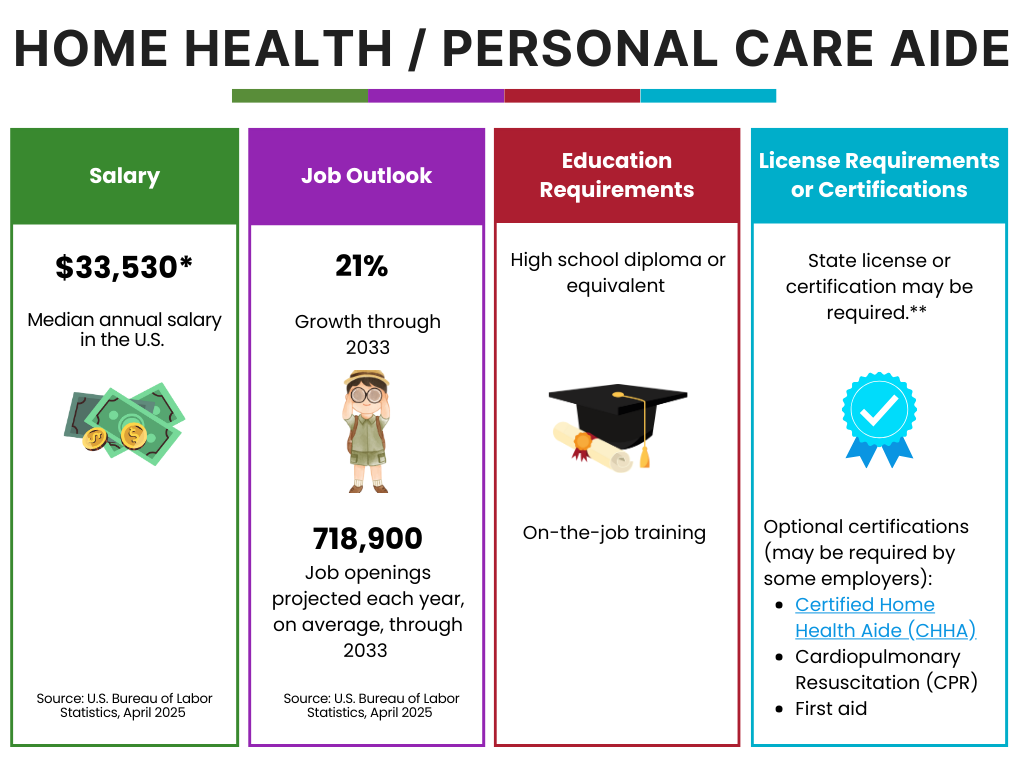
#8. Massage Therapist
Massage has been proven to support better circulation, decreased muscle stiffness and joint inflammation, better sleep, improved immune responses, lower stress levels, and more. Massage therapists provide patient care through massage techniques. Some of their primary responsibilities include maintaining a sanitary workspace, discussing patient medical history and treatment goals, massaging muscles and other soft tissue, and providing guidance on stretching, strengthening, and relaxation.
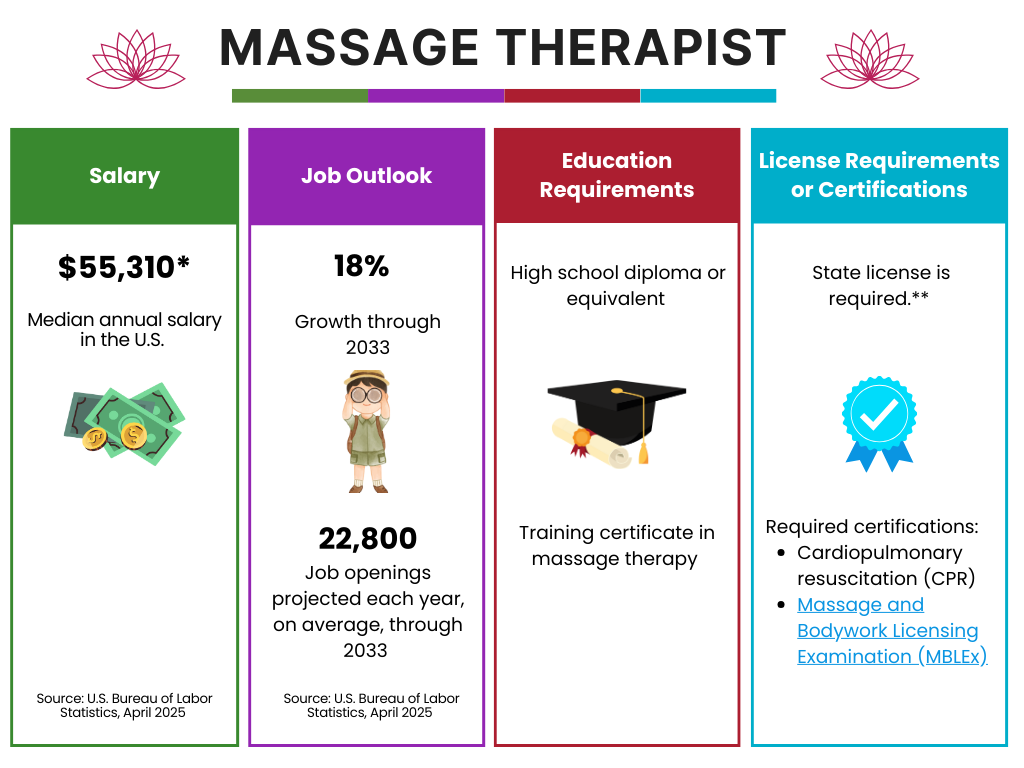
Additional resources
#9. Medical Assistant
Medical assistants are valuable members of the patient care team, providing direct patient care, administrative support, or both. Some of their primary responsibilities may include taking medical histories, measuring patient vital signs, assisting physicians during examinations, performing basic laboratory tests, scheduling appointments, or updating medical records.
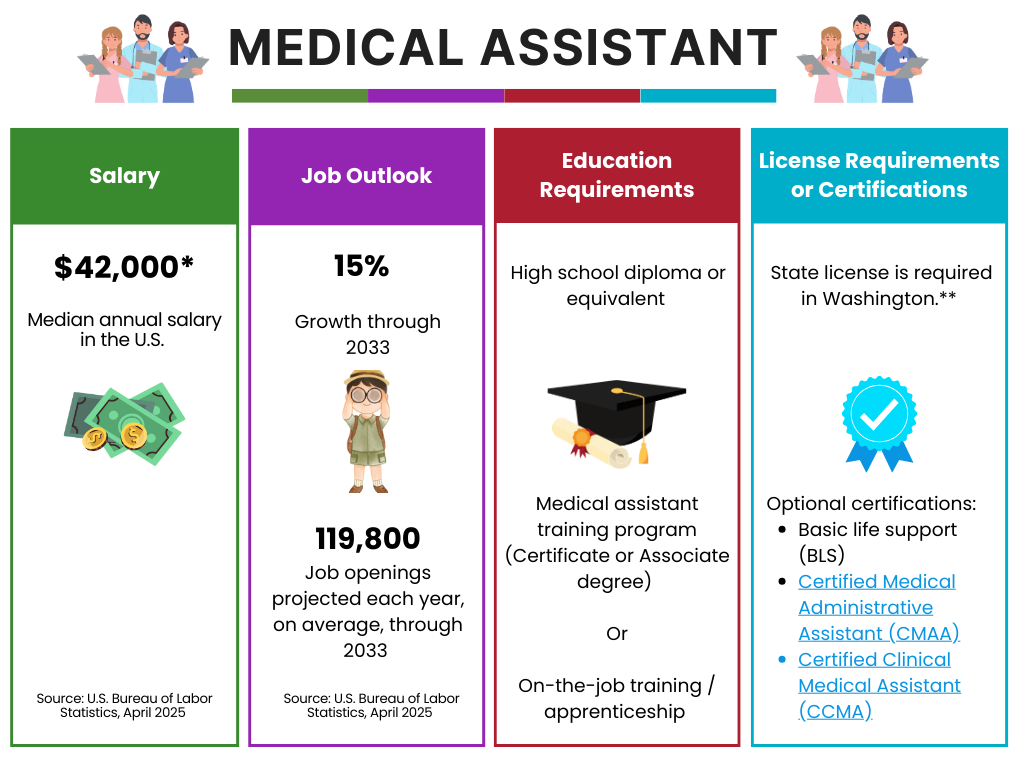
Additional resources
- How to become a medical assistant
- Is a medical assistant career right for you?
- Online medical assistant certificate program
- Online medical administrative assistant certificate program
- Online medical assistant associate degree
#10. Medical Administrative Assistant
Some medical assistants focus solely on administrative tasks, earning them the title of medical administrative assistant. Some of their primary responsibilities include answering telephones and greeting patients, updating and filing patient medical records, scheduling appointments, and arranging for hospital admissions and laboratory services.
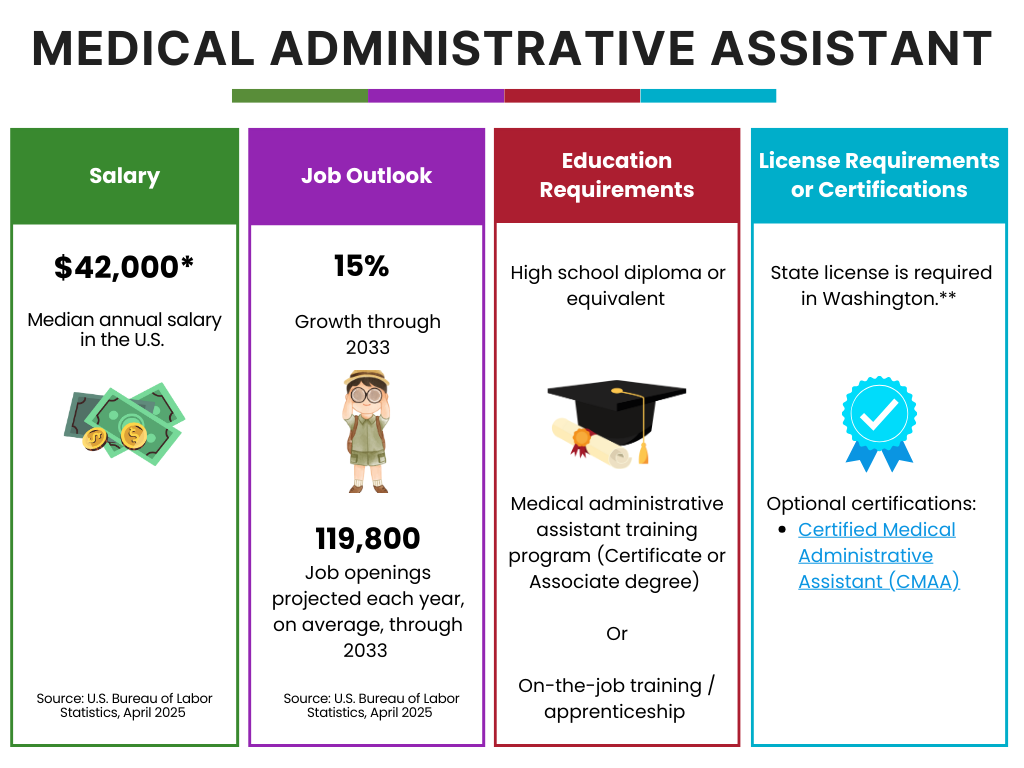
Additional resources
- How to become a medical assistant
- Is a medical assistant career right for you?
- Online medical assistant certificate program
- Online medical administrative assistant certificate program
- Online medical assistant associate degree
#11. Medical Coding and Billing Specialist
Every patient visit must be accurately documented and coded to ensure proper billing — a task often left to the expertise of trained medical coding and billing professionals. Some of their primary responsibilities include reviewing patient records for completeness and accuracy, assigning clinical codes, maintaining and retrieving patient records for reimbursement, and recording data for analysis and reporting.
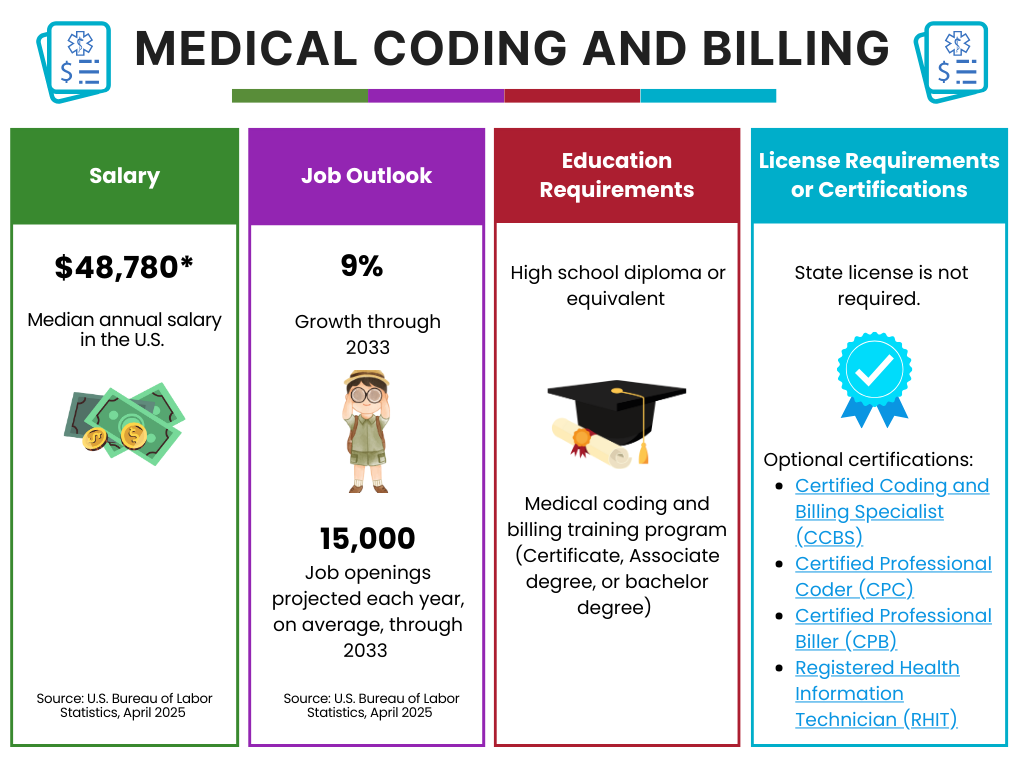
Additional resources
- Exploring a career in medical coding and billing
- Career outlook: Medical coding and billing
- Earning potential for medical coding and billing professionals
- Online medical coding and billing certificate program
- Online medical coding specialist certificate program
- Online medical billing specialist certificate program
#12. Medical Transcriptionist
Medical documentation doesn’t always start in written form. Many healthcare professionals will dictate medical updates, which medical transcriptionists use to create formal reports. Some of their primary responsibilities may include listening to recorded dictation from physicians or other healthcare professionals, interpreting and transcribing that dictation, reviewing and editing drafts created through speech recognition software, and entering medical reports into electronic health record (EHR) systems.
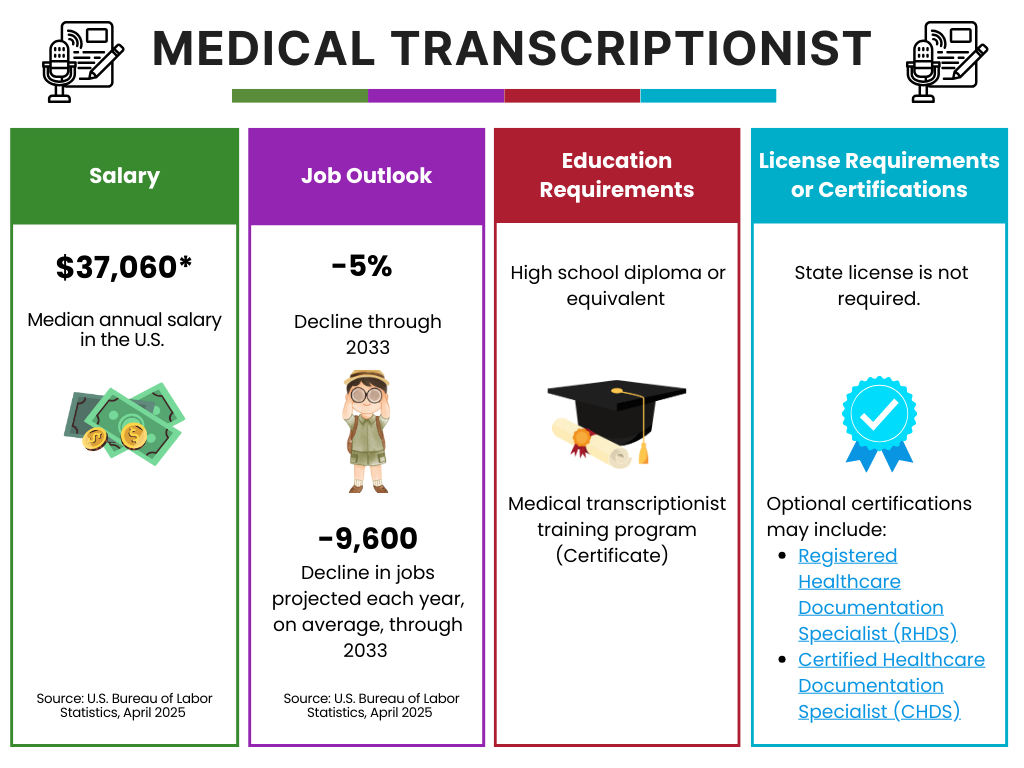
Additional resources
#13. Nursing Assistant or Patient Care Technician
High-quality patient care requires varying levels of support. From physicians and nurses to nursing assistants or patient care technicians, it takes a village to meet the varying needs of patients of all ages. Some of the primary responsibilities of a nursing assistant or patient care technician include helping patients with personal hygiene tasks (e.g., bathing, toileting, dressing), repositioning or transferring patients, and taking vital signs.
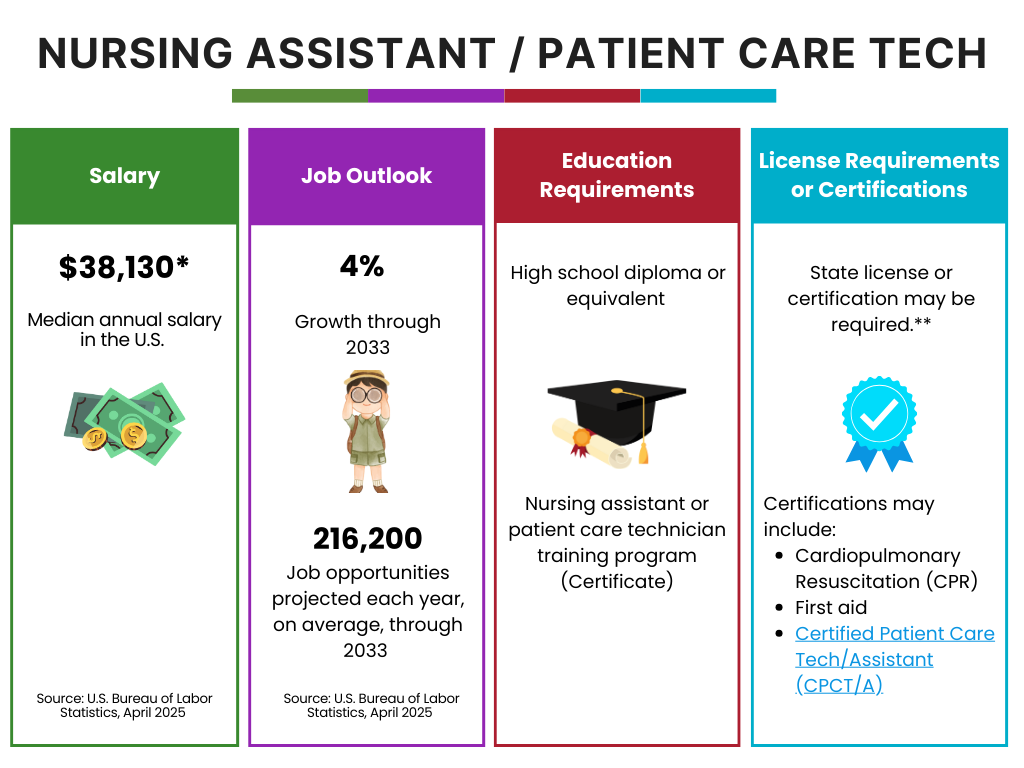
Additional resources
- Medical assistant (MA) vs. Certified nursing assistant (CNA)
- Patient care technician skills
- Online patient care technician certificate program
#14. Optician
Getting the proper fit for eyeglasses or contact lenses requires the expertise and finesse of a trained optician. There primary responsibilities may include retrieving vision prescriptions, helping customers choose eyeglasses or contact lenses that best fit their vision needs, measuring customers’ eyes and faces to ensure a proper fit, and adjusting or repairing eyewear.
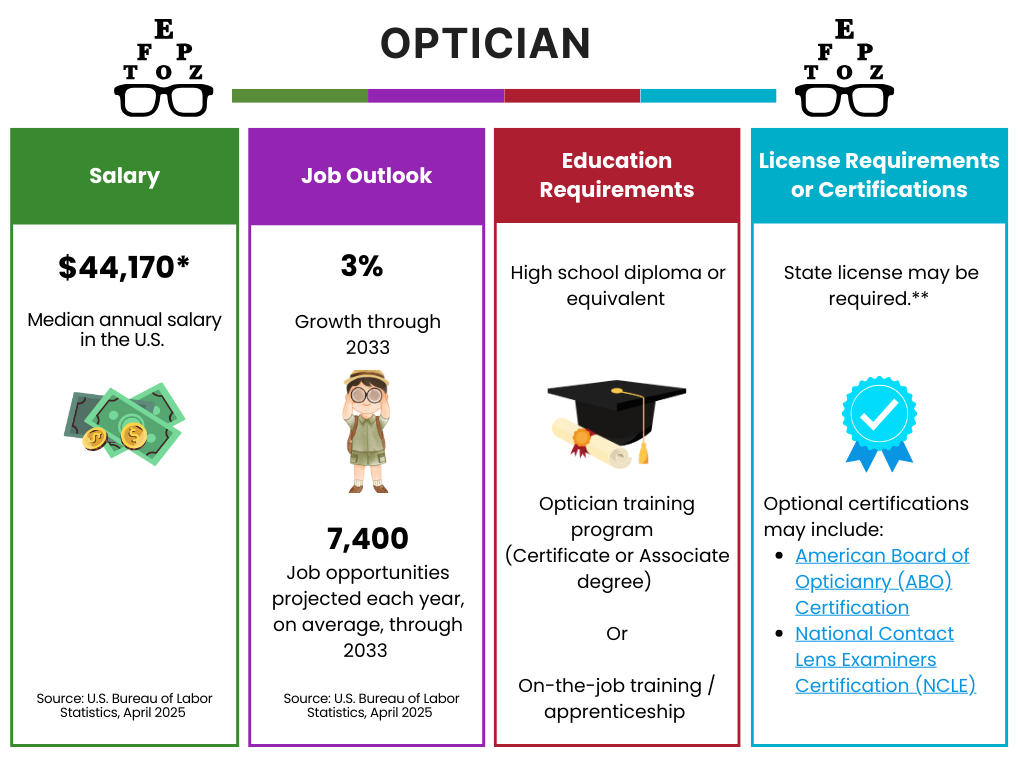
#15. Pharmacy Technician
If you’ve ever visited your local pharmacy, you’ve likely spoken with a pharmacy technician. There primary responsibilities may include gathering information to fill prescriptions, measuring medications, packaging and labeling prescriptions, and processing insurance claims.
